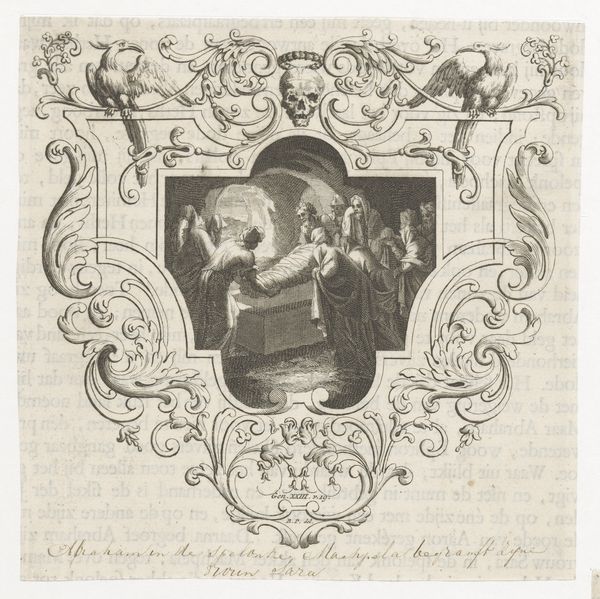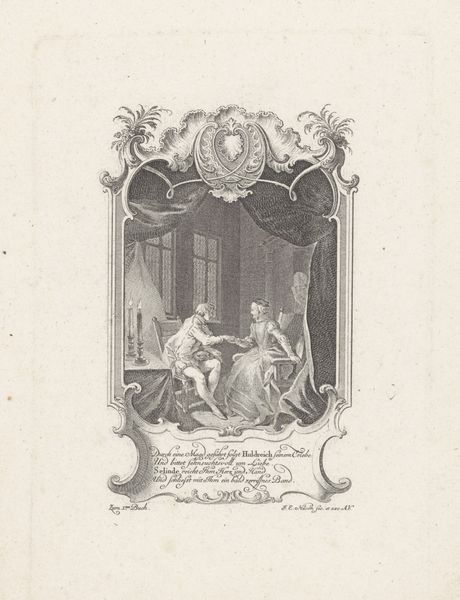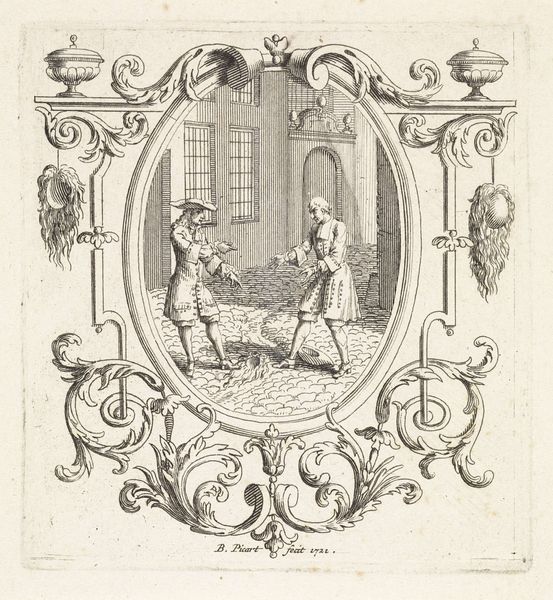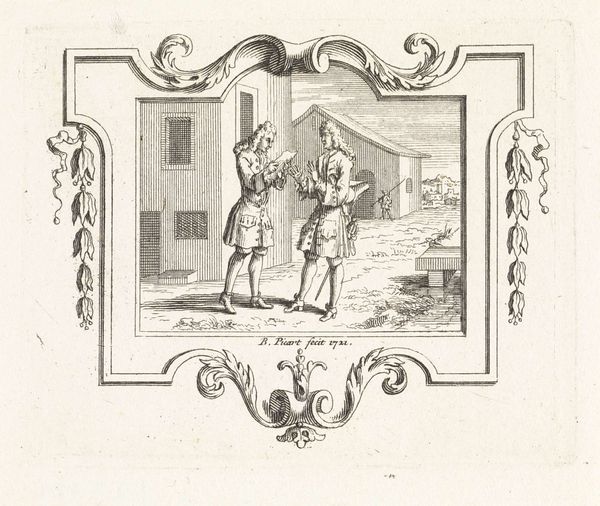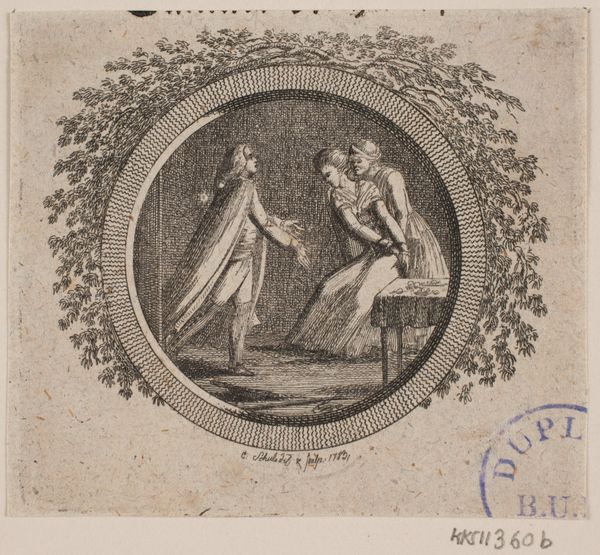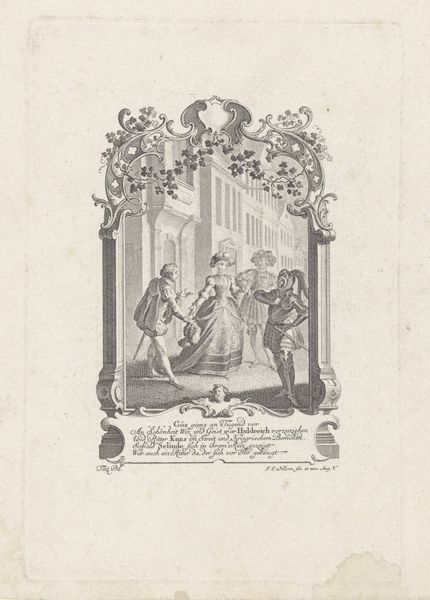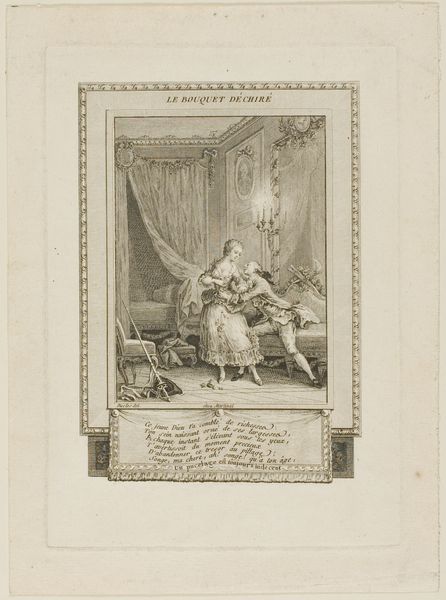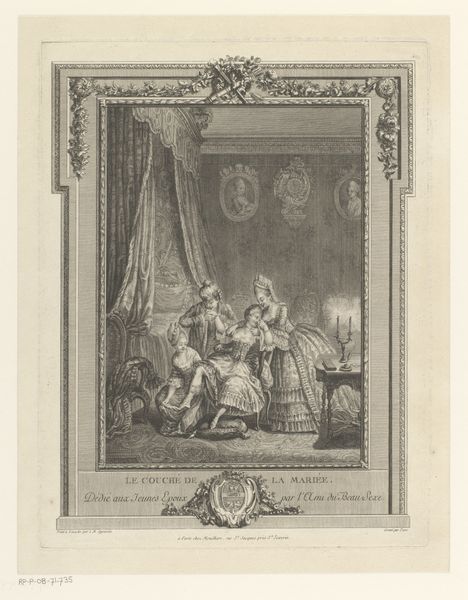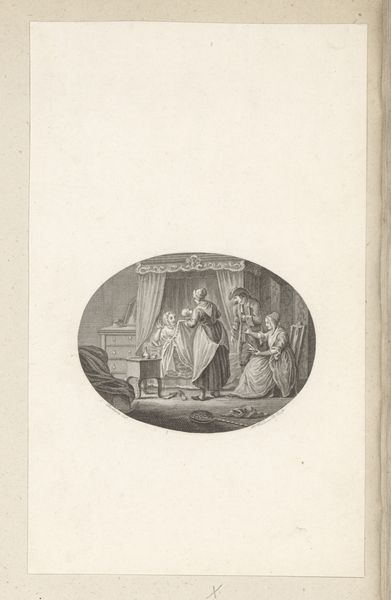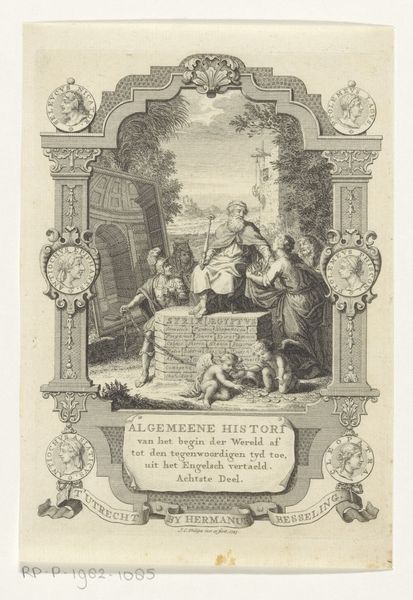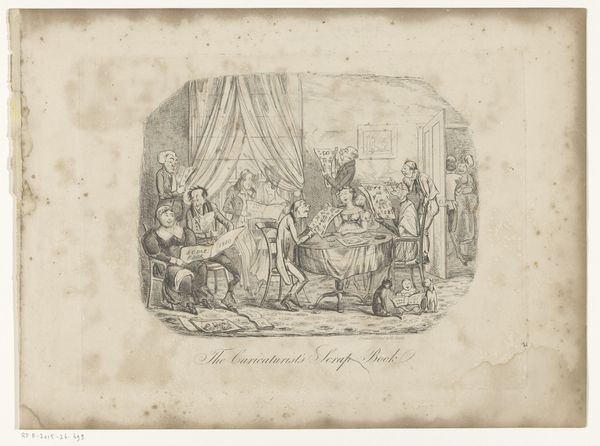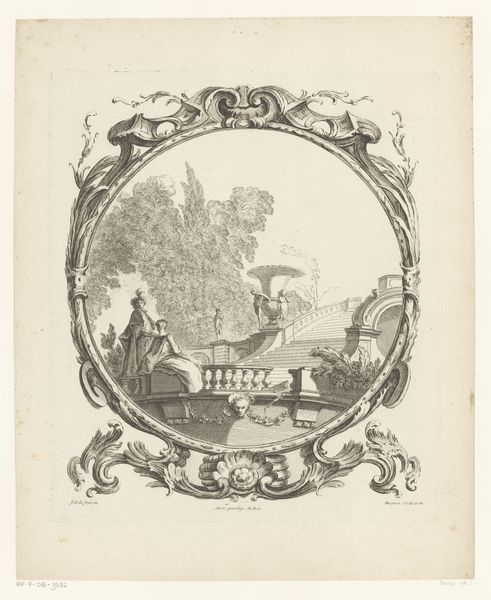
print, intaglio, engraving
#
narrative-art
#
baroque
# print
#
intaglio
#
figuration
#
history-painting
#
engraving
Dimensions: height 163 mm, width 173 mm
Copyright: Rijks Museum: Open Domain
Editor: So this print, “Rebekka bij de bron,” which translates to “Rebecca at the well,” is an engraving made sometime between 1683 and 1733. It depicts a biblical scene with Rebecca offering water. I’m immediately drawn to the intricate frame around the central image, but also curious about the exchange between the two main figures. How do you interpret this work? Curator: Well, immediately I see a staging of power and social norms typical of its era. The seemingly simple act of offering water becomes laden with implications of gender roles, class, and perhaps even colonial relationships, depending on the context in which it was circulated and viewed. Consider who is depicted as serving, and who is receiving. What does it say about the expectations placed upon women? Editor: That’s interesting. I hadn't considered the power dynamic so explicitly. The man is clearly of a higher status based on his clothes. Is Rebecca’s act of service one of kindness or of societal obligation? Curator: It’s both! The beauty of art like this lies in its inherent ambiguity and contradictions. Consider how this image might have been used to reinforce specific ideals, or perhaps, subversively, to critique them. Look at the figures in the background. Are they all in agreement? How could this image function in different cultural contexts? Is there a hint of the exotic in the rendering of this far-off place? These prints often traveled far and wide, shaping perceptions. Editor: That’s a lot to think about. The act of service might be presented as virtuous, but underneath are those complex relationships based on gender and class. Curator: Exactly. This print opens a window onto the nuanced social tapestry of its time, revealing threads of power, duty, and perhaps even quiet resistance, all wrapped up in a seemingly simple act of offering water. Editor: I'll definitely look at similar works with a new perspective moving forward, seeing how everyday interactions are connected to broader societal norms. Thanks!
Comments
No comments
Be the first to comment and join the conversation on the ultimate creative platform.
